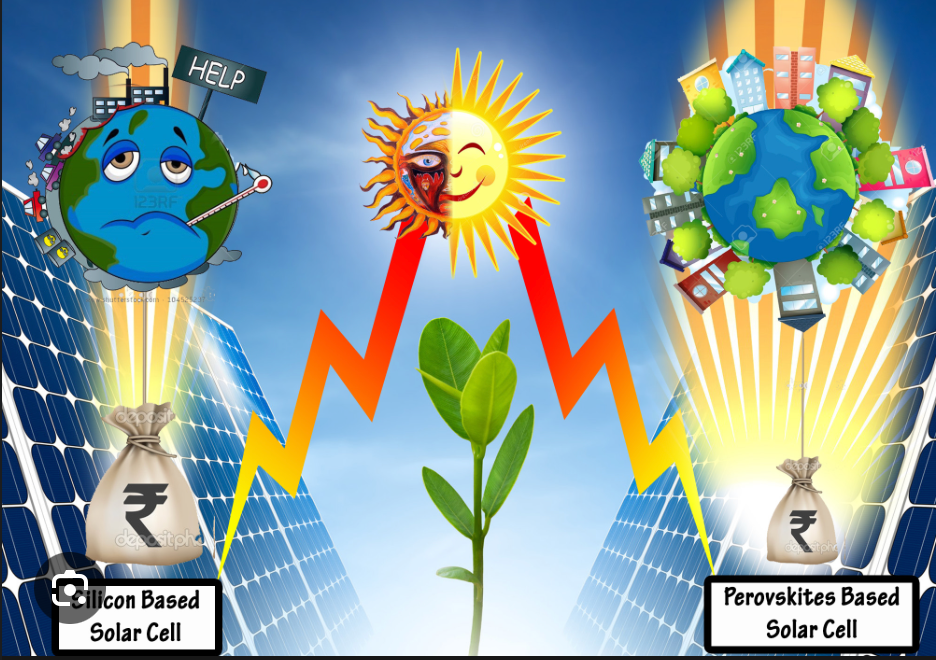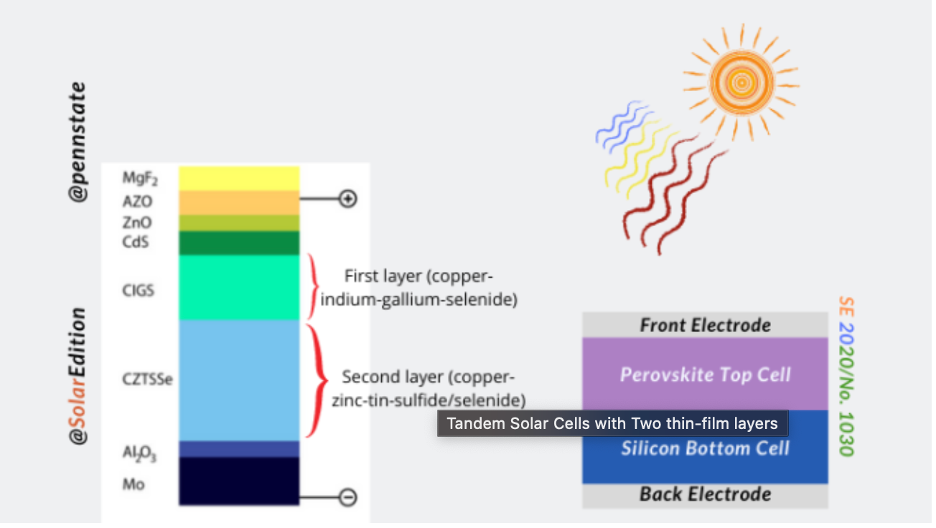(A TANDEM SOLAR PANEL COULD BE THE FUTURE)
May 22, 2023
Hello everyone,
We all know about solar panels. Some of us have them. Some of us don’t.
Is there a chance we can make them more efficient?
Bill Gates seems to think so.
His Breakthrough Energy Ventures is exploring the mineral perovskite, which was found about 200 years ago, to see if it can lead to a new, more efficient leader in solar energy.
Apparently, perovskite has a crystal-like structure that could transform sustainable energy by boosting the efficiency of commercial solar panels.
Solar panels accounted for nearly 5% of U.S. energy production last year, up almost 11-fold from 10 years ago and enough to power about 25 million households. Nearly all the solar modules that are used in power generation today consist of conventional silicon-based panels made in China, a technology that has changed little since silicon cells were discovered in the 1950s.
Other materials used, like gallium arsenide, copper indium gallium selenide and cadmium telluride – the latter a key to the largest U.S. solar company First Solar’s growth - can be very expensive or toxic. Backers of perovskite-based solar cells say they can outperform silicon in at least two ways and accelerate efforts in the race to fight climate change. Just this week, First Solar announced the acquisition of European perovskite technology player Evolar.
How does it all work and what are the barriers in silicon-based solar panels?
Photovoltaic cells convert photons in sunlight into electricity. But not all photons are the same. They have different amounts of energy and correspond to different wavelengths in the solar spectrum. Cells made of perovskites, which refer to various materials with crystal structures resembling that of the mineral, have a higher absorption coefficient, meaning they can grab a wider range of photon energies over the sunlight spectrum to deliver more energy. While standard commercial silicon cells have efficiencies of about 21%, laboratory perovskite cells have efficiencies of up to 25.7% for those base don perovskite alone, and as much as 31.25% for those that are combined with silicon in a so-called tandem cell.
Sustainability and cost are also brought into the frame. Perovskite cells can be more sustainable to produce than silicon. Intense heat and large amounts of energy are needed to remove impurities from silicon, and that produces a lot of carbon emissions. It also has to be relatively thick to work. Perovskite cells are very thin – less than 1 micrometre – and can be pained or sprayed on surfaces, making them cheap to produce. A 2020 Stanford University analysis of an experimental production method estimated that perovskite modules could be made for only 25 cents per square foot, compared to about $2.50 for the silicon equivalent.
It looks like many industries in all corners of the world will start production lines in factories for the commercialization of their solar cells before 2025. And it looks like the tandem module will become a breakthrough climate technology. CubicPV has been backed by Bill Gates’s Breakthrough Energy Ventures and they have been developing these tandem modules since 2019.
A tandem module is one which has a bottom silicon layer and a top perovskite layer, and their efficiency can reach as much as 30%. And there are advantages. CubicPV argues that the company’s perovskite chemistry and its low-cost manufacturing method for the silicon layer make the tandem approach economical. CEO of CubicPV, explains that tandem extracts more power from the sun, making every solar installation more powerful and accelerating the world’s ability to curb the worst impacts of climate change. Furthermore, he believes that the entire industry will switch to tandem within the next decade.
How do these cells perform outside a lab environment?
And will the tandem cells have the required stability to be commercially viable?
Japan seems to think so.
They are now building these panels into walls and windows in their buildings.
Exhibited at CES 2023, Panasonic’s 30 cm-square perovskite-only cell has an efficiency of 17.9%, the highest in the world, according to a ranking from the U.S. National Renewable Energy Laboratory. Panasonic says it aims to commercialize its perovskite cells in the next five years.
Perovskite cell inventor Miyasaka believes perovskite-based power generation will account for more than half of the solar cell market in 2030, not by replacing silicon but through new applications such as building walls and windows.
It looks like this mineral could be a big contributor to realizing a self-sufficient sustainable society.
Welcome to a new week.
Have a good one.
Cheers,
Jacquie





